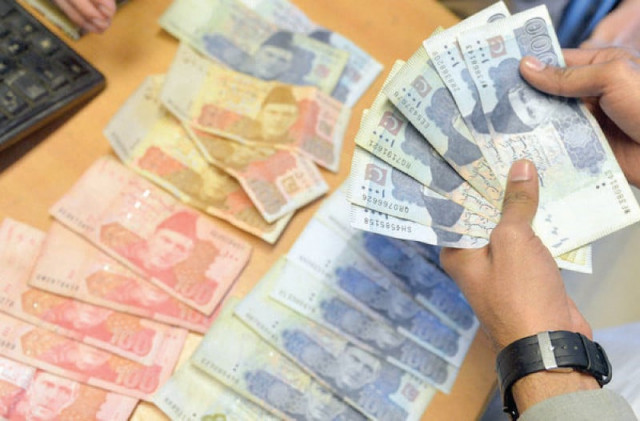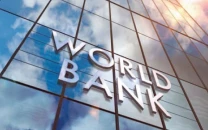FDI: the implementation issues
Investors expect quick services, irrespective of whether depts are federal, provincial or local

The FY24 saw net foreign direct investment (FDI) rise to $1.9 billion from $1.63 billion in FY23. FY24 also saw $1.1 billion in FDI outflows compared with $941 million in FY23.
Foreign portfolio investment (FPI) registered outflows of $382.5 million during FY24 compared with $1 billion during FY23.
Despite maintaining a high interest rate, the economy couldn't attract, or even hold, short-term capital mainly because of exchange rate volatility.
Likewise, despite offering an attractive incentive package, the country could not win the confidence of foreign investors, interested in long-term commitment through the FDI.
Between FY20 and FY24, the economy saw cumulative FDI outflows of $4.72 billion against the cumulative net FDI of $9.9 billion. China has remained the largest source of FDI into Pakistan, with $2.65 billion worth of capital inflows (26.8% of the total) during the last five years.
Likewise, China has remained the largest source of FDI outflows at $942 million (19.97% of the total) during the same five-year period.
From FY15-FY19 (the first phase of CPEC), the cumulative net FDI from China sat at $3.6 billion, making up 36% of the total net FDI of $9.98 billion into Pakistan.
Why FDI fails to measure up to the desired level? In particular, why FDI from China has fallen when the Asian giant's outbound FDI (ODI) is on the rise, particularly for BRI member countries?
In 2023, China's ODI in BRI countries amounted to $31 billion compared with $21 billion in 2022, $20 billion in 2021 and $18 billion in 2020.
Over the past one and a half decade, Pakistan has opened its economy through privatisation and deregulation and at present it has a liberal FDI regulatory regime.
One, there is freedom to bring, hold and take out foreign currency in any form. Two, fiscal incentives provided by the government cannot be altered to the disadvantage of the investor.
Three, the privatisation of an enterprise is fully protected. Four, no foreign enterprise can be taken over by the government.
Five, original foreign investment as well as profits earned on it can be repatriated to the country of origin. Six, equal treatment is provided to a foreign investor and local investor in terms of import and export of goods. Seven, FDI is not subject to taxes in addition to those levied on domestic investment.
Eight, foreign currency accounts are fully protected and they cannot be frozen (vide the Foreign Currency Accounts Ordinance 2001).
Though Pakistan's regulatory regime is as much investment friendly as that of any other country in the region, the problem lies in its implementation.
Pakistan is a federation, and legislative and executive powers are distributed between the central government and provinces.
In every province, the executive and regulatory powers are further devolved to local governments.
The investment regulatory policies and incentives are announced by the federal government but their execution rests with the provinces and cities.
For instance, one of the initial and most important decisions made by a foreign investor is the purchase of land. Land management is a local government function.
Ask any successful market economy and it will tell you that well-defined property rights are the key to success.
An investor, particularly one from overseas, needs not to spend a lot of time on locating a suitable piece of land for his company and then find, to his horror, that it is disputed.
Though provinces, particularly Punjab, are putting in efforts to digitalise land record, property rights remain mostly ill-defined in Pakistan.
Another related factor is that setting up and operating a company involves several departments, some of which, such as for electricity and gas supply, are federal; some, such as environment and labour, are provincial; and others, such as water supply and building control, are local.
An investor needs not to move from one department to another to seek necessary permissions, authorisations or NoCs.
In countries, such as China, which have an outstanding record of attracting FDI, all such services are provided under one-roof by the representatives of relevant departments.
This is called one-stop service. When a foreign investor decides to commit his hard-earned capital to Pakistan for a long-term venture, he expects quick and hassle-free services, irrespective of whether the departments concerned are federal, provincial or local.
Since Chinese businesses, in particular, are accustomed to one-stop service at home, they expect the same level of service delivery overseas including Pakistan.
It is pertinent to mention that in the first phase of CPEC, FDI from China was almost exclusively made by mega state-owned enterprises in energy and infrastructure.
Being mainly G2G ventures, they had their peculiar dynamics. In the current phase of CPEC, however, the potential investors from China are mostly small and medium enterprises from the private sector, who are more risk averse and service demanding.
Not only that, in several countries, investment advisory centres have been set up, which provide information to the foreign investor about that country's policies and laws bearing upon the investment, such as preferential market access in other economies under free trade agreements, protection of intellectual property rights, import tariffs, export and import restrictions, tax rates, consumer safety and environmental standards.
Such measures boost the investor's confidence and help him in making the right decisions.
Investment packages are announced at the top level but their implementation is the business of the officials working down the hierarchy.
This makes the role of the civil service, particularly at the provincial and local levels, exceedingly important in the successful completion of investment projects.
The civil service in Pakistan, which continues to have a colonial structure, is by and large regulation-oriented, whereas, for investment promotion, they need to be facilitation-oriented. Instead of trying to keep businesses under their thumb, like a colonial master (sahib), they should facilitate them in settling down.
Besides, civil servants working at local levels are primarily concerned about collecting revenue and managing government land. Promoting investment is a way down their list of priorities.
Hence, it is crucial to build both the orientation and capacity of local government officials for investment promotion.
In China, investment and export promotion is the key component of performance appraisal of the officials from the governor (in provinces) and mayor (in cities) downwards.
Hence, the entire government machinery is geared towards accomplishing this task.
The special economic zones, in which China is the biggest success story in the world, are managed by local officials.
Pakistan may also consider introducing this key performance indicator for the divisional commissioner and deputy commissioner downwards. Another suggestion is to put in place a specialised cadre at the provincial level for export and investment promotion.
The writer is an Islamabad-based columnist



















COMMENTS
Comments are moderated and generally will be posted if they are on-topic and not abusive.
For more information, please see our Comments FAQ